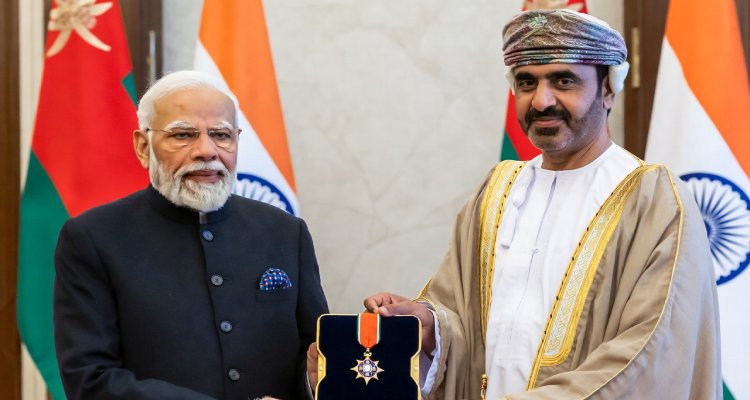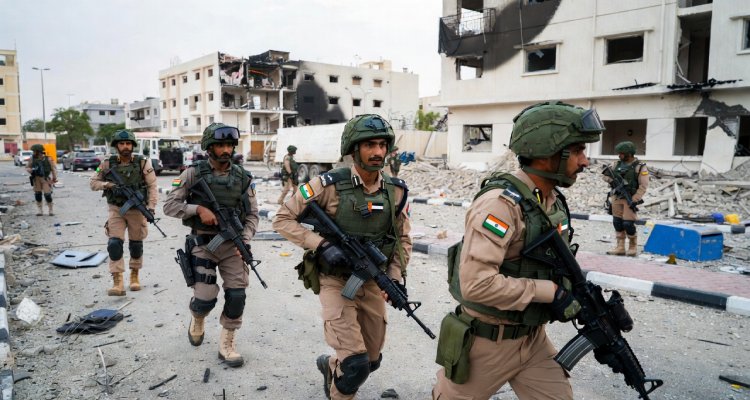Russian Jet Clashes with NATO Warplanes Over Baltic
A Russian fighter jet and NATO aircraft engage in a tense aerial showdown over the Baltic amid rising geopolitical friction.
Tensions Escalate as Russian Fighter Challenges NATO Over the Baltic
In a dramatic and dangerous encounter over the Baltic Sea, a Russian Su-35 fighter jet clashed midair with NATO aircraft after a tense maritime standoff involving a sanctioned oil tanker suspected to be part of Vladimir Putin’s covert “shadow fleet.” The confrontation underscores escalating military brinkmanship in one of Europe’s most volatile regions.
Tanker Incident Sparks High-Stakes Response
The chain of events began when Estonian defense forces attempted to inspect an 800-foot crude oil tanker—formerly known as the Jaguar—believed to be aiding Russia in evading Western oil sanctions. Though flying a Gabonese flag, international maritime databases indicated the ship recently changed both its name and nationality, further fueling suspicions.
Estonian patrols, supported by helicopters and surveillance aircraft, approached the vessel to verify its credentials. But the ship refused to cooperate, prompting NATO to scramble Polish MiG-29 fighter jets for air support.
Russian Fighter Enters the Fray
In response, Russia dispatched a Su-35S jet, which reportedly breached Estonian airspace—a serious violation of NATO territory. Footage from the incident shows a Polish MiG shadowing the Russian jet in a tense aerial maneuver near the Gulf of Finland. The airspace violation prompted Estonia to summon Russia’s Chargé d’Affaires and lodge a formal diplomatic protest.
“This was a serious and unacceptable breach of international norms,” declared Estonian Foreign Minister Margus Tsahkna. “Russia must face faster, tougher sanctions for these escalations.”
Shadow Fleet and Sanctions Evasion
The oil tanker at the center of the controversy is suspected to be part of a fleet of vessels Moscow uses to circumvent Western sanctions. These ships, often registered under obscure flags and frequently renamed, allow Russia to continue exporting oil without detection.
According to Equasis, a maritime safety database, the Jaguar changed its name and flag state in early February. By the time of the incident, it was registered under Guinea-Bissau—another tactic to muddy ownership and destination trails. British authorities had blacklisted the ship just days before the Baltic showdown.
Estonia ultimately chose not to board the vessel, instead escorting it until it crossed into Russian-controlled waters near Gogland Island. Despite being taunted by the crew—who called Estonian forces “clowns” in intercepted radio messages—the Estonian military emphasized that its priority was securing critical infrastructure, not risking unnecessary confrontation.
Rising Regional Anxiety
This clash occurs against the backdrop of growing concern among Baltic and Nordic nations. Satellite images recently revealed a buildup of Russian military forces near Finland’s border, with expanded facilities and troop deployments suggesting long-term strategic planning.
A Finnish government report warned of potential Russian attacks on neighboring countries, and NATO sources have privately confirmed Moscow is rehearsing scenarios that involve multi-front offensives on the alliance’s eastern flank. Areas considered vulnerable include Norway’s coastline, Finland’s Lapland region, the Swedish island of Gotland, and the Baltic states.
“Russia is moving quickly to fortify its presence in the northwest, signaling preparation for prolonged tension or conflict,” the Finnish intelligence summary stated.
A Peace Summit Without Putin
Amid these tensions, a separate effort to revive peace talks between Russia and Ukraine in Istanbul appeared to falter. While Russian President Vladimir Putin initially proposed direct talks, he ultimately sent lower-level officials, a move widely seen as a diplomatic slight.
Ukrainian President Volodymyr Zelensky had signaled openness to negotiations, contingent on Putin’s direct involvement. But following the Kremlin’s decision to skip top-level representation, Kyiv’s next steps remain uncertain. Turkish officials, hoping to broker dialogue, have released no clear schedule or confirmed participation from either side.
The stalled talks raise questions about Russia’s true intentions—whether the Kremlin is genuinely pursuing peace or simply buying time while it prepares for further military engagement.
Strategic Implications for NATO
The Baltic standoff reflects broader strategic calculations. Military analysts suggest that rather than launching large-scale invasions, Russia might focus on creating isolated flashpoints—forcing NATO to decide whether to escalate or risk letting small territories slip away.
Such tactics aim to exploit political divides within NATO, testing the alliance’s unity and resolve. As Russia’s shadow fleet continues to operate in legal gray zones, and as military posturing intensifies along key borders, NATO must weigh its responses carefully.
Conclusion: A Tipping Point in the Baltic?
The dogfight over the Baltic wasn’t just an isolated incident—it was a signal. With Russia testing boundaries both in the air and at sea, and NATO pushing back in defense of its members, the fragile balance in Eastern Europe faces new strains. Whether through shadowy tanker routes or provocations in sovereign airspace, Moscow’s strategy appears to be one of relentless pressure.
For NATO, the challenge is clear: remain vigilant, act decisively, and avoid being drawn into piecemeal conflicts that erode collective security. For global observers, the Baltic flashpoint is a stark reminder that Europe’s Cold War-era fault lines are heating up once again.
Disclaimer:
This article is a reimagined narrative based on publicly available news reports. It aims to provide a professional and analytical perspective on international events. The views presented do not constitute an official stance of any government or organization.
source : Daily Mail











